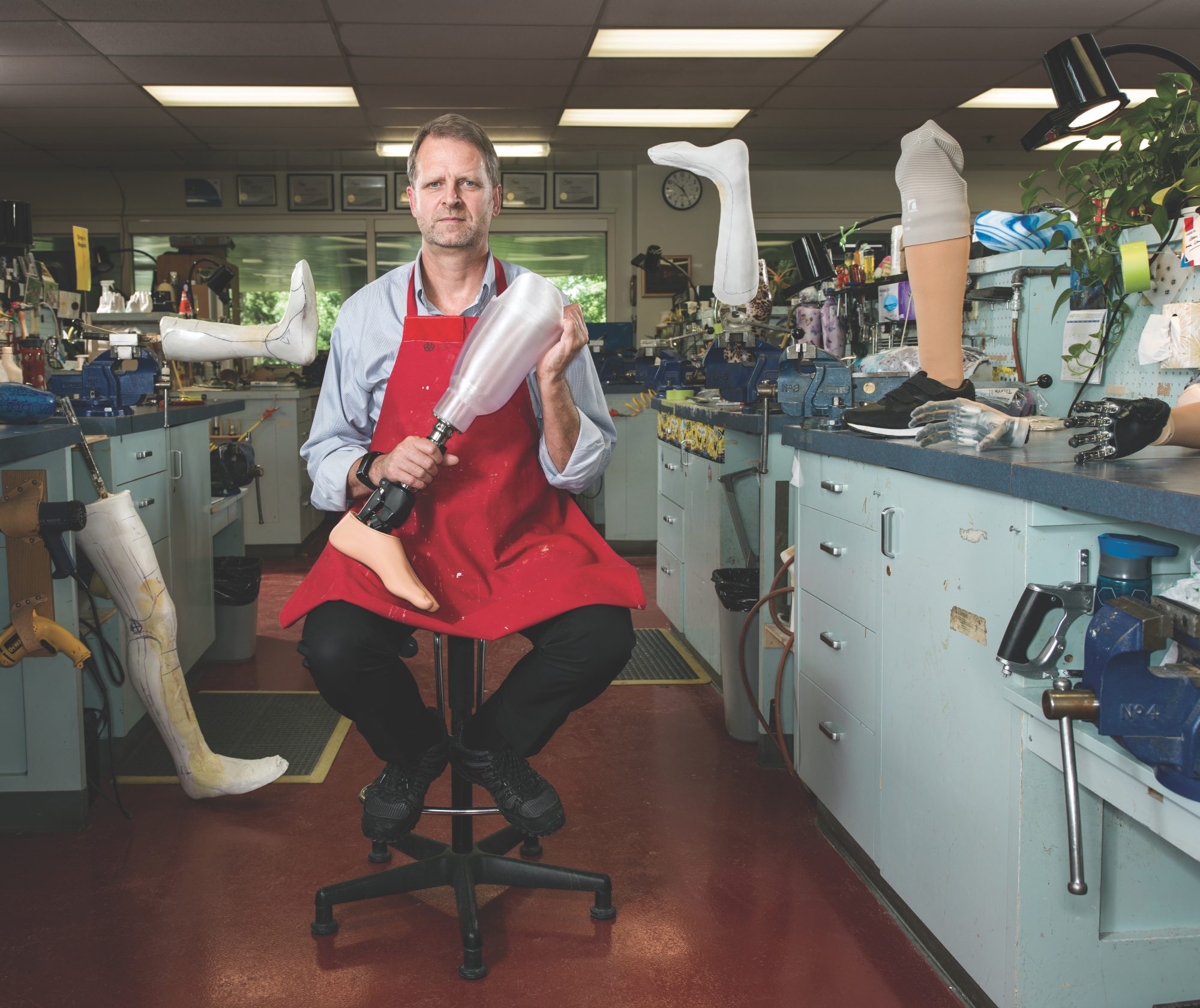WHO: David Home
AGE: 59
JOB: Prosthetist, Glenrose Rehabilitation Hospital
EXPERIENCE: Part mechanic, part machinist, part artist, part psychologist – David Home may only have one job title, but he wears many hats in his role as a prosthetist at the Glenrose Rehabilitation Hospital.
Home is on the front lines of patient rehab, building the prosthetic limbs that help people get their quality of life back after accidents or illnesses.
But, even with all the drills and sanders at his department’s disposal, he jokes that one of the tools that gets the most use is the printer – the tool responsible for the wall of photos of people taking their first steps in their new limbs.
“When you look at the expressions on those people’s faces, it’s a huge thing to walk again … That wall says it all,” he says.
After volunteering with disabled kayakers, Home was part of the second prosthetics and orthotics class at the British Columbia Institute of Technology. After graduating in 1984, he was in private practice for a few years before joining the Glenrose staff in 1987.”I just love doing what I do. It’s like getting paid to do my hobby,” he says. “I mean, there’s the administrative side, but you work with really nice people who are grateful you’re doing what you’re doing. You get to make things; you get paid to be creative.”
If you want to get into the prosthetics field, “have good marks in your sciences, and have good marks in some of your humanities – things like psychology and social sciences, because you have to be a well-rounded human to survive and do well in this field. But you also have to have the science bent. It’s the two; it’s the yin and the yang.
“We assess the person’s muscle strength, range of motion – what’s left… Then we make a plan with the [patient] and figure out what their lifestyle is, what their expectations are. Are their expectations reasonable? Sometimes people’s hopes are higher, but you can’t knock that out of them. It’s a dance.
